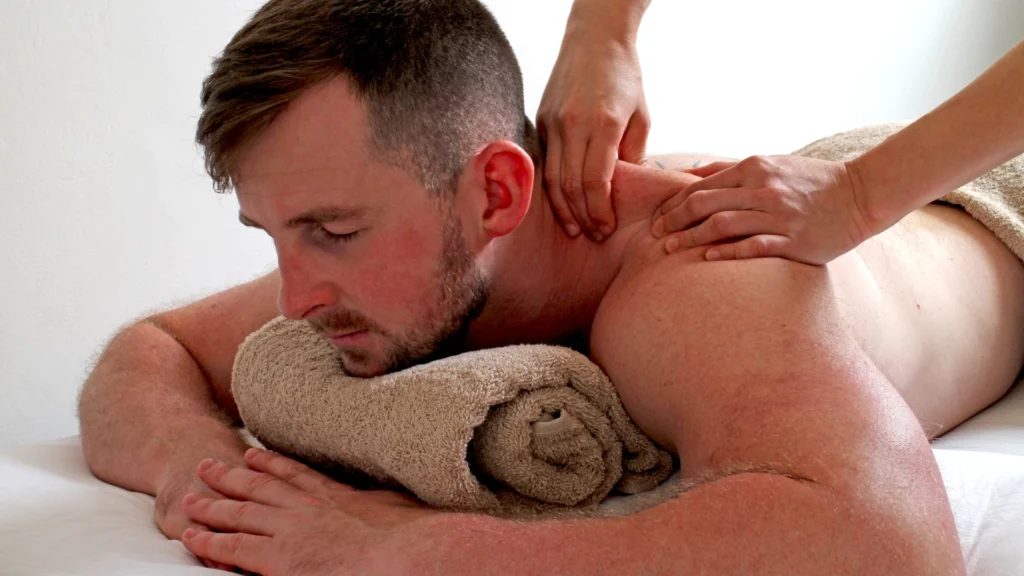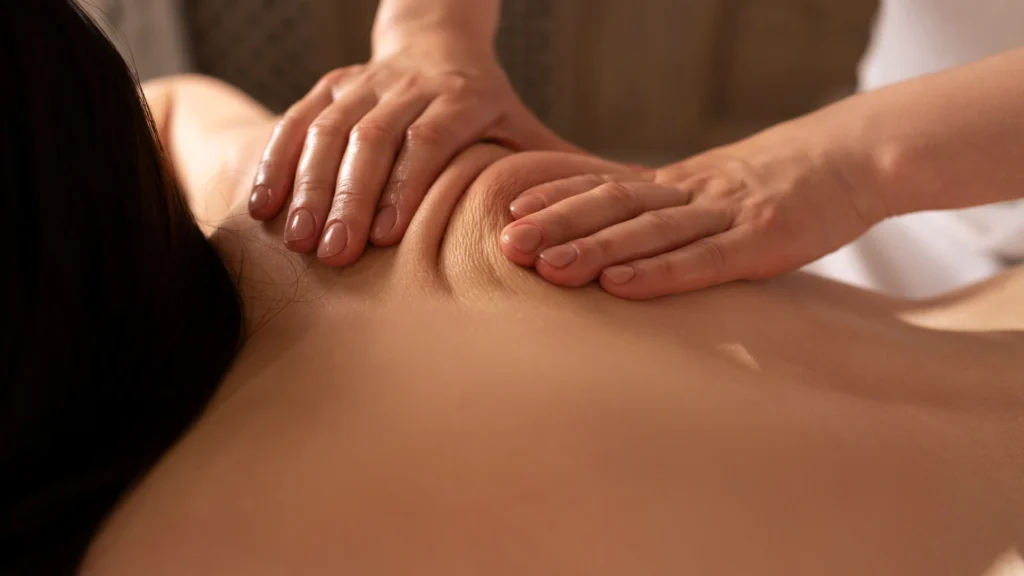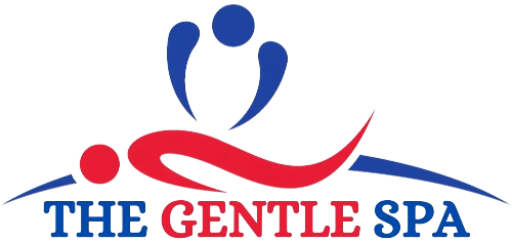In this Comprehensive Blog Post on ‘Does Deep Tissue Massage Burn Calories?’ You’ll Discover:
- The physiological effects of a deep tissue massage on your body and what happens during the process.
- Whether a deep tissue massage can help you burn calories or its benefits lie elsewhere.
- And how it differs from other massage techniques.
Curious to uncover the truth behind this common question? Let’s explore Now!
Quick Answer To: Can Deep Tissue Massage Burn Calories?
Yes, Deep tissue massages Can burn calories, but the amount is relatively low, typically around 80-100 calories per hour. However, the primary purpose of a deep tissue massage is not calorie burning; it’s primarily focused on therapeutic benefits such as pain relief, muscle relaxation, stress reduction, and overall well-being. Regular exercise and a balanced diet are more practical if you want to lose weight or burn significant calories.
Jump To:
The Body’s Energy Expenditure During a Massage
How Does Deep Tissue Massage Affect the Body?
Now that we better understand what deep tissue massage entails let’s find out how it affects the body and whether it contributes to calorie burning.
During a deep tissue massage, the therapist applies pressure to specific muscle groups, targeting areas of tension and discomfort. This pressure can stimulate various physiological responses in the body, including:
- Increased Blood Flow: The pressure applied to muscles can promote better circulation, delivering oxygen and nutrients to the tissues. Improved blood flow can aid in the healing process and reduce inflammation.
- Release of Endorphins: Deep tissue massage can trigger the release of endorphins, which are natural painkillers and mood elevators. This can contribute to a sense of relaxation and well-being.
- Muscle Relaxation: The sustained pressure applied during the massage can help muscles relax, reducing tension and stiffness.
- Improved Range of Motion: Deep tissue massage can enhance joint flexibility and overall mobility by addressing muscle tightness and knots.
Interested in learning the Full Deep Tissue massage Process? Check Out My Following guide: “What Happens In Deep Tissue Massage Sessions,” to learn All the Steps.
How Does a Deep Tissue Massage Burn Calories?
While it’s true that the body expends energy during physical activities, it’s important to note that deep tissue massage is a relatively low-intensity activity compared to traditional forms of exercise.
The energy expended during a massage is primarily directed toward the physiological processes involved in relaxation, muscle recovery, and stress reduction. While some energy is required for these processes, it’s unlikely to result in a substantial calorie burn comparable to more strenuous physical activities like jogging or weightlifting.

Measuring Caloric Expenditure in Deep Tissue Massage
How Are Calories Typically Measured?
To determine whether a deep tissue massage burns calories, it’s essential to understand how they are typically measured in physical activity.
Calories are a unit of energy; when we engage in activities, our bodies expend energy. This energy expenditure is measured in terms of calories burned.
Standard methods for measuring calories burned during physical activity include:
1. Metabolic Equivalents (METs):
METs are used to quantify the energy expenditure of various activities. One MET is equivalent to the energy expended at rest. For example, light activities like sitting have a low MET value, while more strenuous activities like running have higher MET values.
2. Heart Rate Monitoring:
Heart rate monitors can estimate calorie expenditure based on heart rate data. The idea is that a higher heart rate correlates with a higher calorie burn because the heart is working harder.
3. Oxygen Consumption (VO2):
Sophisticated tests can measure the amount of oxygen consumed during physical activity. This is directly related to calorie expenditure, as oxygen produces energy.
Limitations of Measuring Calories During a Massage
While these methods help measure calorie expenditure during traditional forms of exercise, they have limitations when applied to a deep tissue massage:
- Low Intensity: Deep tissue massage is a relatively low-intensity activity compared to activities with higher MET values, like jogging or cycling. This means that the calories burned during a massage will likely be lower.
- Difficulty in Tracking: Heart rate monitoring and oxygen consumption measurements may not accurately reflect the energy expenditure during a massage. Massage involves periods of rest, making it challenging to track consistently.
- Individual Variability: The number of calories burned during a massage can vary significantly from person to person. It depends on the therapist’s technique, the client’s body composition, and the massage duration.
In light of these limitations, keeping realistic expectations about calorie burning during a deep tissue massage is essential. While some energy is expended, the primary focus of a massage is not calorie burn but rather its therapeutic benefits.
Unsure about why you get Deep Tissue Massage? Explore my following guide on: “Actual Benefits to Expect from a Deep Tissue Massage“ for better understandings.
Factors That Influence Caloric Expenditure During a Massage
1. Intensity of the Massage
The intensity of a deep tissue massage can vary depending on the therapist’s technique and the client’s preferences. A more intense massage with firmer pressure may require slightly more energy from the therapist and the client. However, it’s essential to note that even with intense pressure, the overall calorie burn is likely to be modest due to the low MET value of the activity.
2. Duration of the Massage
The length of the massage session also plays a role in caloric expenditure. Longer sessions may result in a slightly higher calorie burn than shorter ones. However, the difference is relatively small, and the primary purpose of extending the duration of a massage is to target specific areas of tension or discomfort, not to maximize calorie burn.
3. Client’s Body Composition
Individual factors, such as a person’s body composition, can influence the amount of energy expended during a massage. People with more muscle mass tend to burn slightly more calories during physical activity, including massages, than those with less muscle.
4. Therapist’s Technique
The therapist’s skill and technique can impact the effectiveness of a massage and, to some extent, the energy expenditure involved. A skilled therapist can provide a more targeted and efficient massage, potentially resulting in better muscle relaxation and tension relief.
5. Overall Energy Expenditure
It’s crucial to remember that the calorie burn during a deep tissue massage is just a tiny part of the overall daily energy expenditure. Walking, standing, and even digesting food contribute significantly more to daily calorie expenditure than a massage.
In summary, while factors such as intensity, duration, body composition, and therapist’s technique can influence calorie burn during a deep tissue massage, the overall impact on calorie expenditure is relatively modest. As, Deep tissue massage service is primarily a therapeutic practice to address muscle tension, pain relief, and relaxation.

The Role of Diet and Exercise
If your goal is weight management or calorie expenditure, it’s important to remember that massages are not a replacement for a healthy diet and regular exercise. While they offer various health benefits, including stress reduction and improved circulation, they are not a significant calorie-burning activity.
To achieve weight management goals, focus on a balanced diet and an exercise regimen that suits your fitness level and preferences. Consult with a healthcare provider or a fitness professional to create a tailored plan that aligns with your specific goals.
Those are a few reasons why they should not be seen as a primary method for burning calories or losing weight. Combine massages with a healthy lifestyle that includes proper nutrition and regular physical activity for effective weight management.

Final Thoughts on: Does Deep Tissue Massage Burn Calories
In conclusion, while deep tissue massages may not be a calorie-burning activity, their holistic benefits make them valuable to your wellness routine. They offer stress reduction, improved circulation, pain management, and enhanced physical performance, among other advantages.
When considering the role of deep tissue massage in your life, it’s essential to view it as part of a comprehensive approach to well-being. You can promote a healthier, more balanced lifestyle by embracing the full benefits of deep tissue massage. If you’re ready to experience these benefits firsthand, don’t hesitate to schedule a deep tissue massage session with a qualified therapist Today!
FAQs
How many calories do you burn during a deep-tissue massage?
It can vary based on factors like the intensity and duration of the massage, but on average, it’s estimated to be around 80-100 calories per hour. However, the primary purpose of a deep tissue massage is not calorie burning but rather pain relief, muscle relaxation, and overall well-being.
Does a deep tissue massage count as exercise?
Deep tissue massage is not considered an exercise in the traditional sense. While it does involve physical activity, it is a low-intensity activity focused on therapeutic benefits rather than burning calories or improving cardiovascular fitness. Exercise typically involves planned, structured, and repetitive movements to increase physical fitness.
Can massage break up body fat?
Any Massage, including deep tissue, is not a way to break up body fat or reduce fat stores. Fat reduction primarily occurs through a balanced diet and regular physical activity. While massage can stimulate circulation and muscle relaxation, it cannot break down or eliminate fat cells.
Why did You lose weight after a massage?
It’s important to understand that any weight loss experienced immediately after a massage is likely due to factors other than fat loss. Weight fluctuations can occur due to changes in hydration levels, reduction in muscle tension, and temporary relief from water retention. Focusing on a balanced diet and regular exercise is essential to achieve sustainable and healthy weight loss rather than relying on massage as a weight loss method.






